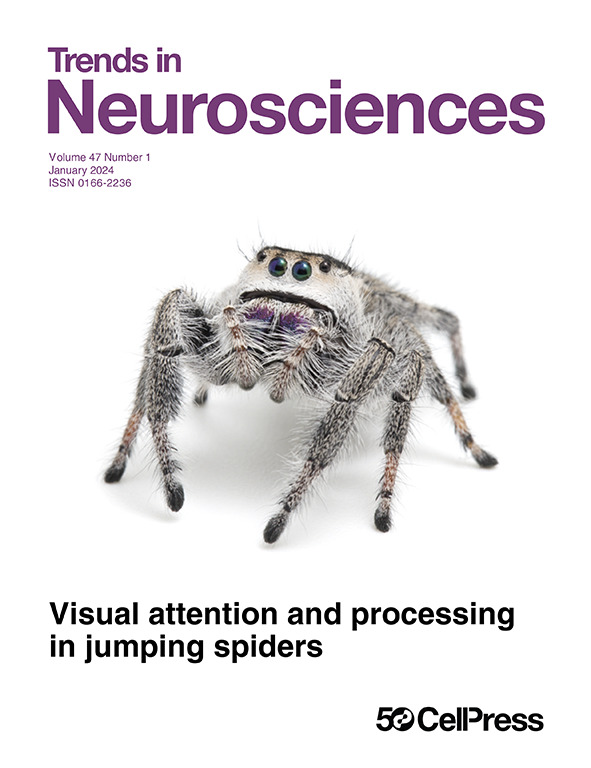通过转录因子聚集减弱神经元对慢性应激的反应。
IF 15.1
1区 医学
Q1 NEUROSCIENCES
引用次数: 0
摘要
神经元是如何应对慢性压力的?在最近的一项使用盲果蝇模型的研究中,Shekhar和他的同事发现,慢性感觉剥夺会导致全脑范围内聚集隔离综合应激反应(ISR)转录因子的聚集体。然而,这种保护机制阻止细胞在外源胁迫下触发适应性转录反应。本文章由计算机程序翻译,如有差异,请以英文原文为准。
Attenuating the neuronal response to chronic stress through transcription factor aggregation.
How do neurons cope with chronic stress? In a recent study using blind Drosophila models, Shekhar and colleagues uncovered that chronic sensory deprivation induces brain-wide accumulation of aggregates sequestering transcription factors of the Integrated Stress Response (ISR). However, this protective mechanism prevents cells from triggering adapted transcriptional responses upon exogenous stress.
求助全文
通过发布文献求助,成功后即可免费获取论文全文。
去求助
来源期刊

Trends in Neurosciences
医学-神经科学
CiteScore
26.50
自引率
1.30%
发文量
123
审稿时长
6-12 weeks
期刊介绍:
For over four decades, Trends in Neurosciences (TINS) has been a prominent source of inspiring reviews and commentaries across all disciplines of neuroscience. TINS is a monthly, peer-reviewed journal, and its articles are curated by the Editor and authored by leading researchers in their respective fields. The journal communicates exciting advances in brain research, serves as a voice for the global neuroscience community, and highlights the contribution of neuroscientific research to medicine and society.
 求助内容:
求助内容: 应助结果提醒方式:
应助结果提醒方式:


